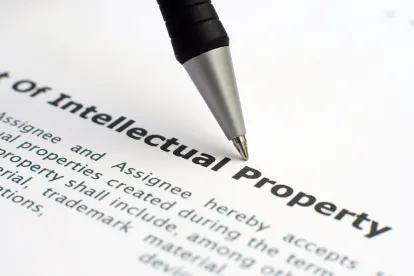The US Court of Appeals for the Federal Circuit held that notwithstanding a stipulation on claim construction, a party may still induce infringement absent proof that it actually relied on the stipulation, and that mere inaction, absent an affirmative act to encourage infringement, cannot be the basis for a claim of inducement. The Federal Circuit also affirmed the district court’s reduction of the jury’s damages award to $0 despite a finding of direct infringement because the plaintiff failed to prove damages. TecSec, Inc. v. Adobe Inc., Case Nos. 19-2192, -2258 (Fed. Cir. Oct. 23, 2020) (Taranto, J.).
TecSec owns several patents on systems and methods for multi-level security for network-distributed files. TecSec sued Adobe (among other defendants) in this now-10-year-old-case, which the Federal Circuit has considered several times. As relevant here, the district court entered a claim construction in 2011 that led to a stipulation of non-infringement, and the Federal Circuit reversed that claim construction in 2013. On remand, the district court barred TecSec from introducing evidence of inducement in the 2011–2013 period on the grounds that it was reasonable for Adobe to have relied on the district court’s ruling and the stipulation. On the new claim construction, Adobe stipulated to one act of direct infringement. Adobe also moved for summary judgment of patent ineligibility, which the district court denied, stating that its rationale supported judgment for TecSec that the patents claimed eligible subject matter. At trial, the jury found that the claims were valid and that Adobe directly infringed but did not induce infringement. The jury awarded TecSec $1.75 million in damages. On Adobe’s post-trial motion, the district court reduced the damages award to $0 because TecSec had not proved inducement and had proved no damages associated with the single act of direct infringement. Both parties appealed.
Inducement
The Federal Circuit reversed the district court’s decision on Adobe’s motion in limine barring inducement evidence for the 2011–2013 period. The district court’s primary rationale for granting the motion had been the reasonableness of Adobe’s reliance on the claim construction order and stipulation of non-infringement. However, the Federal Circuit reasoned that the intent prong of inducement is a subjective inquiry, and that inducement could still be found upon a showing that Adobe subjectively believed that the claim construction order was wrong and would subsequently be reversed.
Jury Instructions
The Federal Circuit next addressed two challenges by TecSec to jury instructions. The first instruction was predicated on three facts: (i) that Adobe had admitted that a certain sequence of steps constituted direct infringement, (ii) that Adobe had performed the steps on at least one occasion, and (iii) that “the parties agree that the one time for which Adobe had admitted infringement . . . occurred before TecSec filed its lawsuit.” The Court found that this instruction was factually accurate and therefore not erroneous. The second instruction explained that inducement required “an affirmative act to encourage infringement,” and that “[e]vidence of mere inaction, or a failure to stop or prevent infringement, does not constitute infringement.” Again, the Court found the instruction to be accurate and therefore not erroneous.
Damages
TecSec argued on appeal that § 284 requires an award of damages upon a finding of infringement. The Federal Circuit disagreed, explaining that a plaintiff’s failure to prove damages arising from the infringement could lead to a $0 damages award. Because the jury had not found inducement, and because TecSec had not proved any damages relating to the sole proven act of direct infringement, the Court affirmed the $0 damages award for direct infringement.
Eligibility
Adobe had characterized the alleged abstract idea underpinning the claims as “managing access to objects using multiple levels of encryption.” The Federal Circuit found that this characterization was too general and divorced from the claim language, which further required an “object-oriented key manager” and specified uses of a “label.” In any event, relying on both the claim language and the specification, the Court held that “the claims are directed to improving a basic function of a computer data-distribution network, namely, network security.” The Court also found that the claims recited a particular solution to realize the improvement. In its Alice Step 2 analysis, the Court again chastised Adobe for failing to consider all of the claimed elements, and in particular the combination of those elements. The Federal Circuit thus affirmed the district court’s ruling on eligibility.
Practice Note: After all the sound and fury, whether TecSec can realize any damages award from its 10-year litigation campaign seems likely to turn on whether Adobe actually relied on a favorable claim-construction ruling and subsequent stipulation of non-infringement.



 />i
/>i

